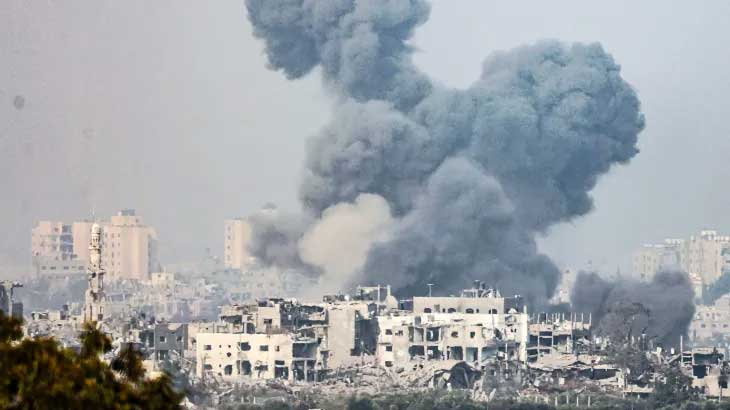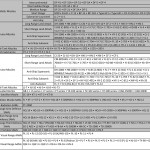The carnage perpetrated by Hamas on the 7th of October by slaughtering more than 1300 Israelis gutted the Israel administration as the whole event exposed the massive pitfalls in the country’s security nexus. Israel ranked 20th in the list of 140th countries considering the annual GFP (Global Fire Power) review in 2019. It holds a nation’s Power Index (PwrIndx) score of 0.3464 (a score of 0.0000 is considered perfect). Its most trusted air defense system established in 2011, the Iron Dome, boasts of having the capacity to intercept 90% of the rockets. But none of the military sophistication owned by the state of Israel could decimate the greatest debacle they faced after the inception of the Jewish state in 1948.
In military strategic jargon the term “asymmetric warfare” describes a conflict where there is a significant disparity in power between the opposing actors, causing the weaker power to use indirect and innovative ways and means to compensate.
The key to fathoming how Hamas outmatched Israeli military machinery lies in the mastery of asymmetric warfare by Hamas, which is a stark emulation of how LTTE used to stun the Sri Lankan government during the civil war from 1983 to 2009. Perhaps it would be a timely analysis to compare the reliance of both Hamas and LTTE towards asymmetric warfare in combating the symmetric nature of war, in which both organizations adopted unconventional war technologies and techniques to hit the enemy astonishingly.
In military strategic jargon the term “asymmetric warfare” describes a conflict where there is a significant disparity in power between the opposing actors, causing the weaker power to use indirect and innovative ways and means to compensate. Theoretical conception of this phase was articulated by Andrew J.R. Mack in the journal World Politics in 1975.
It is not an exaggerative remark to state that LTTE laid down the starting precedent for all the terrorist groups by indulgently utilizing war asymmetries in favor of them, which fastened their early victories against the Government of Sri Lanka. The Anuradhapura massacre of 1985 and attacking the Sinhalese farmers settled in the Northern and Eastern parts of Sri Lanka are akin to what Hamas perpetrated on the 7th of October as both acts contained sentiments filled with antipathy towards their rival communities. As how LTTE considered the Sinhalese settlers from Welioya to Bakki Ela to be the occupants of Tamil homeland, Hamas was convinced of their atrocity as they perceived the Jewish settlers in Kibbutz and NetivHaAsara in South Israel as the enemy possessing their homeland.
In the ‘80s LTTE showed much more astuteness than the Sri Lankan government forces in terms of using creative military technology for their means. In its infancy stage, LTTE relied on whatever military aid they received , but it gradually developed its own arms trade network based in Africa and Thailand. LTTE aptly exploited the internal vulnerabilities in South Africa and Angola but later improvised their indigenous technology by manufacturing their own varieties of mortar bombs and artillery shells.
The adaptability of different boat technologies bypassing the conventional naval strength of the Sri Lankan navy was another notable phenomenon of LTTE as a non-state armed group. LTTE’s naval brigade known as “Sea Tigers” displayed its finest strength of asymmetrical tactics. LTTE was well aware of the technological superiority of the Sri Lankan navy, who owned FAC (Fast Attack Craft), which appeared to be a fatal threat to the budding Sea Tigers and chose a unique asymmetric maneuver by adopting the swarm tactic (known as Wolfpack attacks).
LTTE often used a complex base of bunkers in the forests of Wanni and Mullaitivu to avoid air raids. In that case, LTTE experienced the asymmetric advantage by digging the bunkers before Hamas built their web of tunnels.
Swarming contains autonomous or semi-autonomous behavior with a well-coordinated attacking posture which disrupts the cohesion of the adversary. To counter FACs of the Sri Lankan navy LTTE brought 10 to 15 small boats along with at least two suicide crafts in the pack.
LTTE military technology had the unique feature of adaptability following the different challenges they encountered. LTTE often used a complex base of bunkers in the forests of Wanni and Mullaitivu to avoid air raids. In that case, LTTE experienced the asymmetric advantage by digging the bunkers before Hamas built their web of tunnels. Notwithstanding the formidable security nexus built by the Israelis, Hamas could infiltrate Israeli territory and the day they chose to perpetrate the macabre act was the Jewish festival of Yom Kippur, which is a holy day in the Jewish calendar.
Indeed, LTTE was known for conducting the same pattern of attacks by choosing the special days of Sinhalese religious or cultural festivals, which extremely bemused the government forces. The Fall of Elephant Pass was one of the greatest military debacles in Sri Lankan war history in the year 2000 and LTTE chose a few days after the Sinhala new-year vacation to strike this large military compound of the Sri Lanka army.
LTTE was the only terrorist group that operated a combat air fleet globally, which pestered and mortified the Sri Lankan Air Force regardless of its superior air power. LTTE owned three single-engine Zlin-143 light aircraft and they flew in the night as the Sri Lankan Air Force lacked the airpower to chase LTTE aircraft in the night.
Hamas’s use of Paragliders is akin to the LTTE aircraft as both terrorist groups championed the use of asymmetry against the mighty airpowers of the enemy. Paragliders may have attracted Hamas due to its ability to fly low and slow while providing an open feeling, minimal equipment and low cost. Flying at low heights, Hamas evaded the Israeli radar system and penetrated the Israeli military apparatus.
The other salient parallel that both the LTTE and Hamas deployed in their asymmetric warfare is the apt use of noncombatants to the military objectives. The Gray Area phenomenon coined by the French Anti-Terrorist specialist Xavier Rafuer indicates gray area groups such as terrorist organizations make the best of use of the terrain and civilians by providing services in hospitals and schools.
Israelis should revisit the counter-asymmetric strategies developed by the Sri Lankan government forces in the last stage of the Sri Lankan civil war.
LTTE controlled the school networks in their captured territories, which forged the warlike mentality among the Tamil children resulting in the initiation of the “Child Soldiers” concept and its Middle Eastern sequel can be seen in Gaza, where Hamas maintains a rapport with the Islamic University to forge a vendetta against the Jews.
The initial reaction of Tel Aviv in the aftermath of the 7th of October attack was a paroxysm of embarrassment as Israel rushed quickly to strike the targets in Gaza. At the moment, Israeli forces are on the march to annihilate Hamas from the face of the earth, which stands as the grand objective of Israeli Premier Benjamin Netanyahu. Yet the legal and moral imperatives to safeguard the civilians hinder Tel Aviv’s ambitious project of complete obliteration of Hamas as it does not abide by any constraints.
David Pan describes this situation as a moral asymmetry in which Israel’s choices are being confined to choosing between achieving military objectives and protecting civilians. Perhaps, Israelis should revisit the counter-asymmetric strategies developed by the Sri Lankan government forces in the last stage of the Sri Lankan civil war. Gutted by the constant waves of surprise attacks of LTTE, finally, Sri Lankan government forces clung to the same strategies as their foe such as using the small boat concept and eight-man team, which helped them to subdue LTTE successfully.






While there are undoubtedly many similarities between these two groups, this is a very poor analysis which completely misses. Disappointing and frankly lazy.